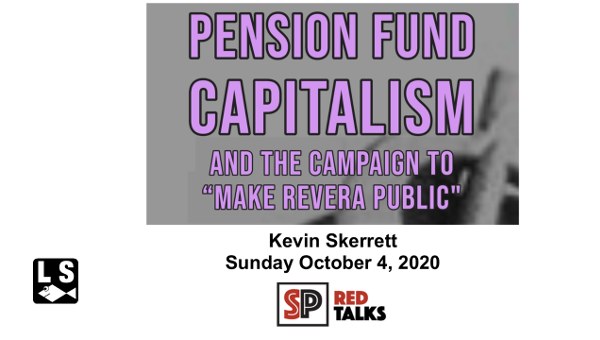Air Canada Workers Reject Wage, Pension Concessions
Members of the largest union at Air Canada have narrowly voted to reject an extraordinary agreement that would have frozen their wages for the next 21 months and allowed the company to suspend payments into the employee pension plan. The International Association of Machinist (IAM) members voted “No” by a 51 per cent majority.
Similar agreements were negotiated with all five of the airline’s unions. Air Canada is the former state-owned, national airline. It was privatized in 1989 and today employs some 28,000 workers. It is the fourteenth-largest airline in the world.
The IAM represents some 11,000 technical, mechanical and support workers at Air Canada. Other unions include the Canadian Union of Public Employees (6,700 flight attendants) and the Canadian Auto Workers (CAW) (5,000 service and sales employees). The CAW has already voted in favour of an agreement; votes among pilots and CUPE members will conclude on July 13.
The extraordinary agreements were negotiated after Air Canada announced earlier this year that it may head into bankruptcy protection. It says it needs emergency financing of hundreds of millions of dollars as well as relief from its pension obligations. Its current pension deficit is $3-billion.
The law governing federally registered pension plans requires that payment schedules cover any deficits within five years. Canada’s largest industrial employers, Air Canada included, are lobbying hard to extend deficit payment schedules to ten years.
Ottawa Demands Concessions
The Canadian government has said it will provide up to $600-million in financing to the airline, but on condition that employees offer up monetary concessions, including on pensions. The company wants to suspend most payments to the pension plan for the next 21 months.
In exchange for monetary and work-rule concessions from workers, Air Canada will place stock value in the employee pension plan. Air Canada shares currently trade at $1.43, down from more than $8 at the outset of last year’s world financial collapse.
The IAM and the airline are now discussing what next steps to be taken. One option being considered by the union is to simply hold another vote. Voter turnout was low, less than 50 per cent of union members. Another option is to negotiate what one IAM leader called “a tweaking of the contract” to address worker concerns over job security.
The main reason for the “No” vote is anger and concern over job security in the airline’s maintenance division. Last year, Air Canada took further steps to spin-off its maintenance division, now called AVEOS. The division includes a repair facility in El Salvador, Aeroman, that the airline acquired in 2007. Union members are convinced that the company intends to transfer much of its maintenance work there in order to profit from significantly lower wages.
The “No” vote was strong in Montreal and tipped the national balance. Rank and file members of the union there reportedly organized against the deal. Air Canada’s largest repair facility is located in Montreal; its other two facilities in Canada are in Winnipeg and Vancouver.
Union members are also angered over the years of wages and work rule concessions they have taken, all the while watching shareholders and executives loot the company. The reviled former CEO, Robert Milton, earned a cool $39-million for the two years 2006 and 2007.
Corporate Looting
At first glance, it would seem strange that Air Canada would be approaching bankruptcy for a second time. Six years ago, it emerged from bankruptcy protection and has since made a killing for its investors and executives. But as the June 2009 Globe and Mail Report on Business magazine reported, the source of the investor bonanza was a combination of financial gimmickry and the spinning off of profitable divisions into separate corporate entities. These include regional carrier Air Canada Jazz, the Aeroplan rewards program, and the aforementioned AVEOS.
Altogether, the former “Air Canada” has been looted of its profit-making divisions. What’s left is a fleet of large aircraft flying national and international routes in the face of very stiff competition.
“It was raped by Cerberus,” airline analyst Ben Cherniavsky told Report on Business, referring to Cerberus Capital Management, a New York “equity” firm that became one of Air Canada’s largest shareholders after the airline emerged from bankruptcy. “The good cash-flow businesses were taken out of it.”
There are striking similarities in all of this to the fate of Chrysler, General Motors and other recently bankrupted enterprises.
As with auto workers, the unions of airline and aerospace workers need a political program and course of action to end the corporate looting of social wealth and place vital services such as transportation under public ownership and planning. One of the pressing goals of economic planning must be a radical change in urban design and transportation modes in order to end the environmental destruction that accompanies the reckless proliferation of fossil-fuel burning cars and aeroplanes. The vote of IAM members at Air Canada and questions over the fate of the airline opens up more space for such discussion. •





